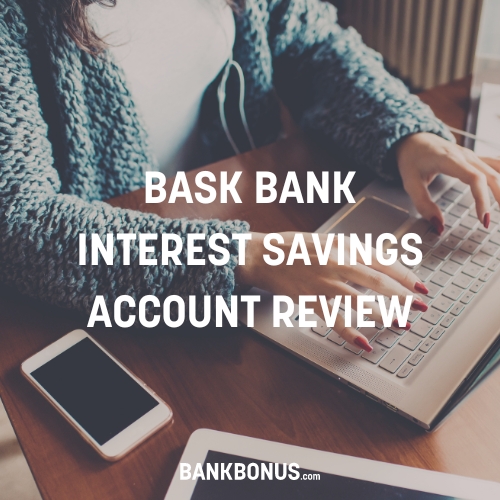Comenity is now Bread Financial, expanding its product line-up to provide more ways to save, borrow, and shop.
With above-average savings rates and an easy-to-use platform, Comenity Direct is an online savings account that can get your nest egg moving in the right direction.
If your savings account isn’t paying an APY on deposits, you’re missing out on free money.
In this post, you’ll get an idea of what it’s like to bank with Comenity Direct.
There are a ton of high-yield online accounts out there, and we’ll put Comenity Direct through the wringer to see how it holds up.
Read our full Bread Financial Review
What is Comenity Direct?
Comenity Direct is an online banking platform owned by Comenity Capital Bank.
You might be most familiar with Comenity for its retail credit cards. The company launched its first credit card in 1986 and has since partnered with more than 150 different merchants to provide branded credit programs.
Comenity Direct serves as the consumer banking wing of the company and offers online savings accounts and certificates of deposit.
Comenity Direct Features
Unlike most online banks, Comenity Direct doesn’t have a laundry list of modern account features to boast about.
Instead, it tends to keep things simple and stick to what it does best, which is providing some of the highest savings rates in the industry.
Online Banking
Comenity Direct is an entirely online banking platform, so you won’t have access to ATMs or physical branches.
From opening your account to moving money around, you have complete access from your smartphone, tablet, or computer.
Mobile App
With the Comenity Direct mobile banking app, you can deposit checks, monitor your balance, and get in touch with customer support.
The app is available on both iOS and Android. It’s well-reviewed in the App Store, with the latest version earning a 4.5-star (out of 5) rating.
Reviews are mixed (at best) in the Google Play Store, with a rating of just 3.1 stars (out of 5).
Comenity Direct Products
Comenity Direct focuses entirely on savings products. You won’t find any checking accounts or even money market accounts here, because it only provides two account options — a savings account and a CD.
With that in mind, it’s important to note that it isn’t an option for those looking for a one-stop shop for all of their bank accounts.
High-Yield Savings Account
The Comenity Direct High-Yield Savings Account comes with two main focuses — earning potential and access to your money.
I’ve already mentioned its high annual percentage yield (APY). The account also comes with free ACH transfers, free incoming wire transfers, and unlimited free deposits.
High-Yield Savings has no monthly maintenance fee, and you can open an account with a minimum deposit of $100. There’s no minimum to start earning interest, which is compounded daily and credited monthly.
Learn More:
Certificates of Deposit (CDs)
If you have spare funds and want the highest possible interest rate, consider a Comenity Direct CD.
Comenity Direct offers CD terms ranging from one to five years. The longer you commit your funds, the higher APY you get.
No matter which term length you choose, there’s a minimum balance requirement of $1,500
There are no fees to open a CD account, and you can withdraw funds without penalty during the 10-day grace period after maturity.
As with all CDs, if you take your money out early, you’ll run into an early withdrawal penalty.
For one to three-year terms, the penalty is 180 days simple interest. For four or five-year terms, the penalty is 365 days simple interest.
Learn More:
Fees
Comenity Direct is an almost entirely fee-free platform, so you won’t need to worry about the fees that come along with traditional savings accounts.
There are only a couple of fees that you’ll need to be wary of, but the good news is that they’re more reasonable than other banks. Here’s the brief list.
Comenity Direct Fees
- Outgoing Wire Transfer: $25
- Official Check Request: $15
- Paper Statement: $5
Getting Started
To get started with a Comenity Direct account, head to the website or download the app. From there, you can get set up with your new savings account in just a few minutes.
The application process is quick, and all you need is your basic personal information and an external account to fund your new one.
There is no need to worry about running through a credit check or getting knocks on your credit score because you’re not applying for credit.
Most initial funding transfers take three to five business days to show up in your account, and you’ll start earning interest immediately.
Promotions
Comenity Direct doesn’t offer any signup or referral bonuses for new accounts, which is in line with its generally low-key approach to online banking.
That said, bank bonus structures are never set in stone, so I’ll keep this updated if Comenity Direct decides to add a promotion in the future.
Learn More:
Security
Like most online banks, Comenity Direct takes online security seriously. For all information exchanges and transactions, you’ll need to authenticate your identity.
On top of that, it runs behind-the-scenes safeguards like fraud monitoring and safe information storage.
Most importantly, all deposits are covered by FDIC insurance, which protects your funds up to $250,000.
Customer Service
Comenity Direct’s website has a ton of FAQs and helpful tips to provide some quick assistance. But you can also speak to a real person.
The customer care phone line is available on weekdays from 7 am to 1 pm Central Time and on weekends from 9 am to 5 pm. You can also opt to send a secure message within your online account.
Pros & Cons
Pros:
- High APYs
- Very few fees
- Great iOS app
- Free ACH transfers
Cons:
- No signup bonus
- Limited account options
- Poorly-reviewed Android app
- No cash deposits
Alternatives to Comenity Direct
If you want to shop around for other online banking services, here are a few that stand out.
Ally Bank
Ally Bank is possibly the biggest name in online banking, and for good reason. The bank runs on a low-fee, high-earning platform and is also one of the leading auto lenders in the US.
Ally’s online savings account is high yield, and its CDs offer various term lengths with high yield.
Marcus by Goldman Sachs
Marcus by Goldman Sachs is an online-only platform with a focus on high-yield savings accounts. There are no fees or minimum deposit requirements, and you can execute same-day transfers of up to $100,000 from external bank accounts.
CIT Bank
CIT Bank is another one of the biggest names in digital banking. CIT offers three different online savings accounts, with 2 of them being high-yield. It also has one of the widest selections of CDs, with Term, Jumbo, RampUp, and No-Penalty options.
Like most online banks, CIT accounts are low-fee, and you can open one in just a few minutes.
FAQs
Is Comenity Direct legit?
Yes, Comenity Direct is a legit online banking option. Basically, it’s a well-established name in the financial world, and it’s been providing credit card services since the mid-80s.
Is Comenity Direct FDIC-insured?
Yes. Comenity Capital Bank, its parent company, is a member-FDIC financial institution. All deposits into Comenity Direct accounts are protected by FDIC insurance for up to $250,000.
Who is Comenity Bank owned by?
Comenity is now Bread Financial, expanding its product line-up to provide more ways to save, borrow, and shop.
Is Comenity Direct Right For You?
Bank rates are low across the board. The Fed is keeping interest rates low, and so the APYs you can earn from your savings deposits are following suit.
With this in mind, when you find a bank offering favorable rates, it’s in your best interest (pun intended) to jump on it.
If you’re looking for a straightforward banking experience with more than competitive rates, Comenity Direct will serve you well.
It doesn’t have a big signup bonus or leading-edge features, but it does what savings accounts are supposed to do:
Grow your money over the long term, and protect it from market volatility and from your spending. And that’s a personal finance game that everyone should be playing.





Comments are closed.
Comments are closed here.